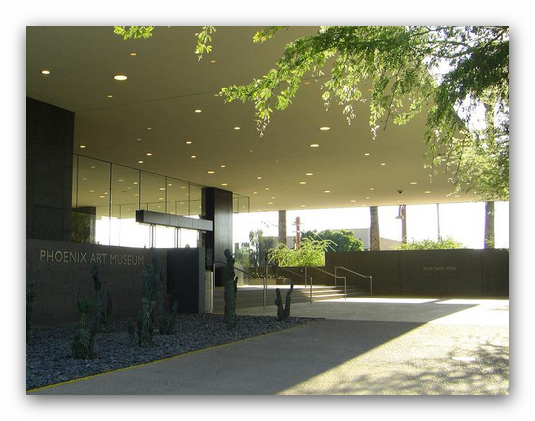Jan 11 2020 - May 15 2022
Phoenix, AZ
Sweet Land of Funk explores the individualism and self-expression of the Funk art style and how Funk artists visually responded to contemporary upheavals in politics, society, and art.
Beginning in the mid-1950s, a social movement evolved from the bohemian underground cultures of San Francisco and New York. Known as the Beat Generation, these young poets, writers, musicians, and artists rejected the conservative conventions of postwar America. They often met in coffee shops and bars to exchange ideas about Zen philosophy, existentialism, and life’s deeper mysteries.
By the 1960s, the Beat Generation of San Francisco merged a range of musical, literary, and performative elements together that evolved into an early period of Funk art. Drawn exclusively from the collection of Phoenix Art Museum, the works on view in Sweet Land of Funk capture the individualism and self-expression of the Funk art style and highlight a range of movements from the Bay Area between 1945 and 1980, including Abstract Expressionism, Bay Area Figuration, and Dude Ranch Dada.
In a 1967 article from Art in America, Harold Paris used the phrase “Sweet Land of Funk” to describe the distinction between the “funky” art of the Beat Generation and the Funk art style that emerged in the 1960s. With an emphasis on personal expression, humor, and wit, funk artists used a myriad of strategies to visually respond to the contemporary upheavals in politics, society, and art. Artists such as Jay DeFeo, Wallace Berman, Wally Hedrick, and Deborah Remington broke down traditional barriers of accepted art forms and used unconventional materials to explore the Bay Area’s underground aesthetic. Artists such as Manuel Neri, Joan Brown, William T. Wiley, and Robert Arneson focused on process to emphasize the absurdity and the unrefined aspects of life.
Credit: Exhibition overview from museum website
Exhibition Venues & Dates
Jan 11 2020 - May 15 2022
Phoenix, AZ
